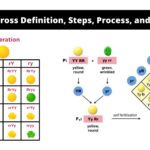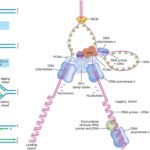IGCSE Biology 20 Views 1 Answers
Sourav PanLv 9November 15, 2024
Describe self-pollination as the transfer of pollen grains from the anther of a flower to the stigma of the same flower or a different flower on the same plant
Describe self-pollination as the transfer of pollen grains from the anther of a flower to the stigma of the same flower or a different flower on the same plant
Please login to save the post
Please login to submit an answer.
Sourav PanLv 9May 15, 2025
Self-pollination is a reproductive strategy in flowering plants (angiosperms) where pollen grains are transferred from the anther of a flower to the stigma of the same flower or to the stigma of another flower on the same plant. This process enables fertilization without the need for external pollinators, such as insects or wind.
Key Features of Self-Pollination
- Mechanism:
- In self-pollination, the pollen grains produced by the anthers can fall directly onto the stigma of the same flower. Alternatively, they may be transferred to a stigma on another flower of the same plant.
- This transfer can occur through various mechanisms, including gravity, movement of the flower, or even self-induced movements of the flower parts.
- Types of Self-Pollination:
- Autogamy: This occurs when pollen from the same flower fertilizes its own ovules. It is a direct form of self-pollination.
- Geitonogamy: This occurs when pollen from one flower fertilizes the ovules of another flower on the same plant. Although it involves two flowers, it is still considered self-pollination because both flowers belong to the same individual.
- Structural Adaptations:
- Many plants that undergo self-pollination have specific structural features that facilitate this process:
- Close Proximity of Anthers and Stigmas: The anthers are often positioned close to the stigma, making it easier for pollen to reach its target.
- Sticky Stigmas: The stigma may have a sticky surface that helps capture pollen grains effectively.
- Flower Morphology: Some flowers have mechanisms that promote self-pollination, such as flowers that close after blooming or those with hermaphroditic structures (having both male and female reproductive organs).
- Many plants that undergo self-pollination have specific structural features that facilitate this process:
Advantages of Self-Pollination
- Reproductive Assurance: Self-pollination ensures that a plant can reproduce even in the absence of pollinators or environmental conditions that favor cross-pollination. This is particularly beneficial in isolated or low-density populations.
- Genetic Stability: Since self-pollination produces offspring that are genetically similar to the parent plant, it can maintain successful traits within a population, especially in stable environments.
- Efficiency: Self-pollinating plants do not rely on external factors for reproduction, which can lead to quicker seed production and potentially more rapid population growth.
Disadvantages of Self-Pollination
- Reduced Genetic Diversity: One major drawback is that self-pollination limits genetic variation among offspring. This lack of diversity can make populations more susceptible to diseases and environmental changes.
- Inbreeding Depression: Over time, self-pollination may lead to inbreeding depression, where accumulated harmful recessive traits can reduce fitness and vigor in offspring.
0
0 likes
- Share on Facebook
- Share on Twitter
- Share on LinkedIn
0 found this helpful out of 0 votes
Helpful: 0%
Helpful: 0%
Was this page helpful?




